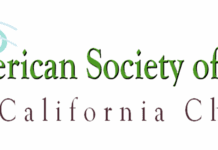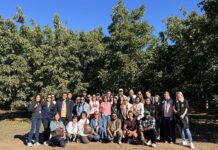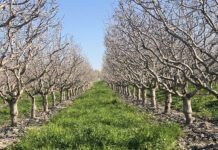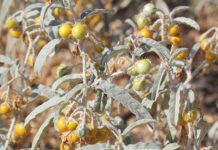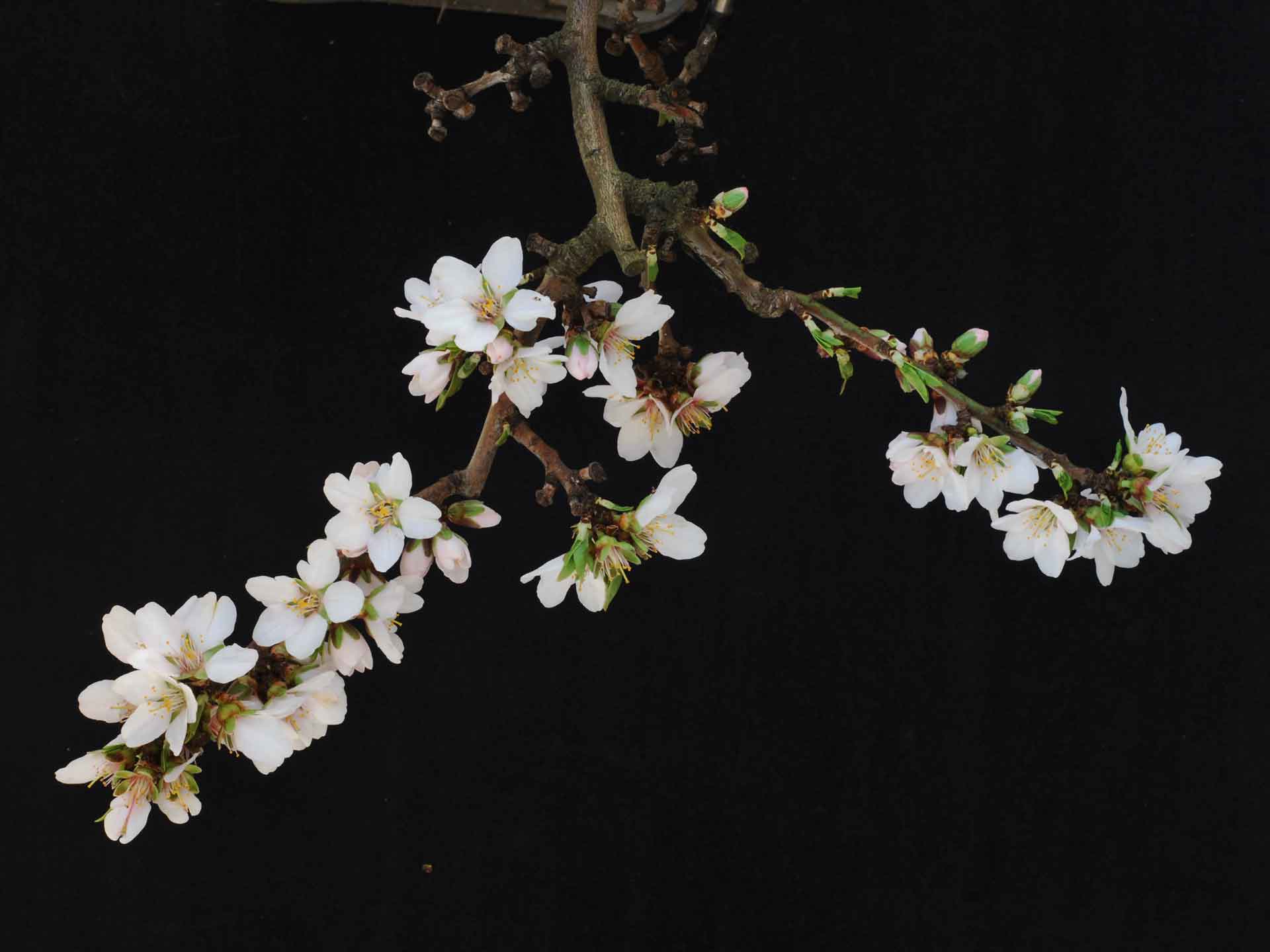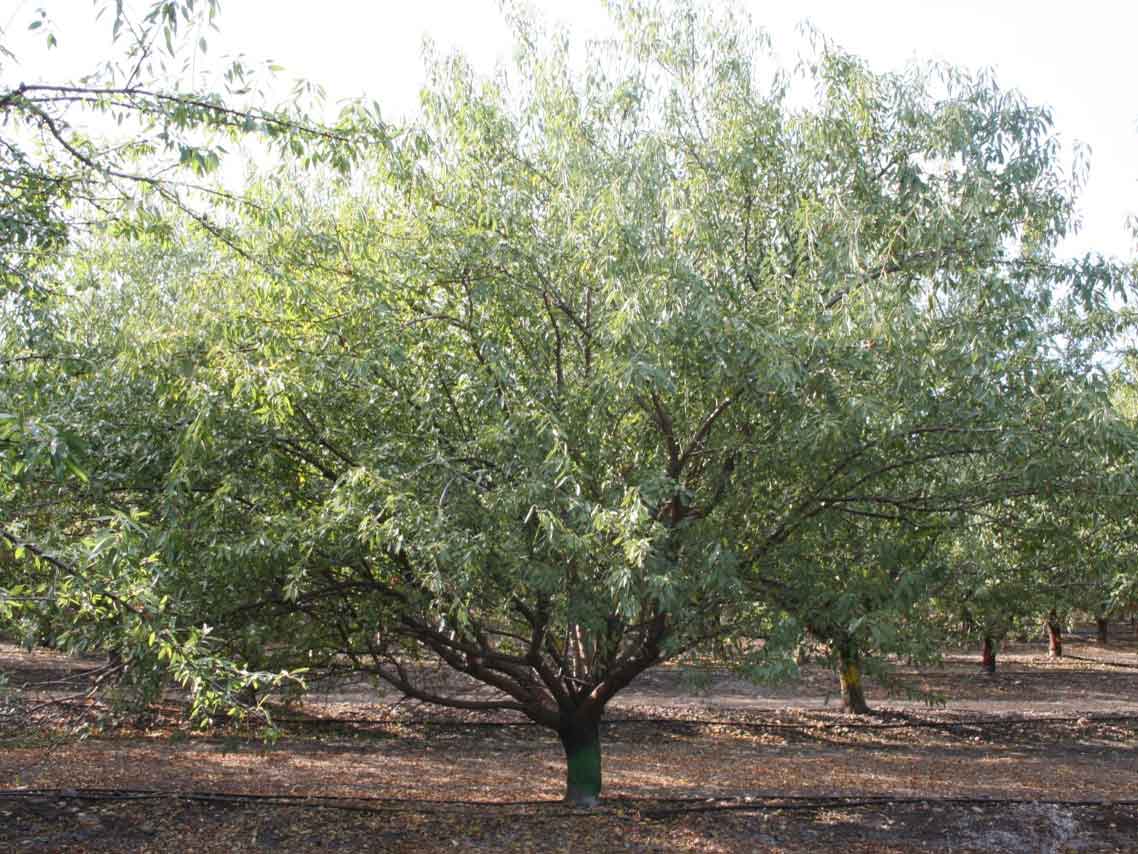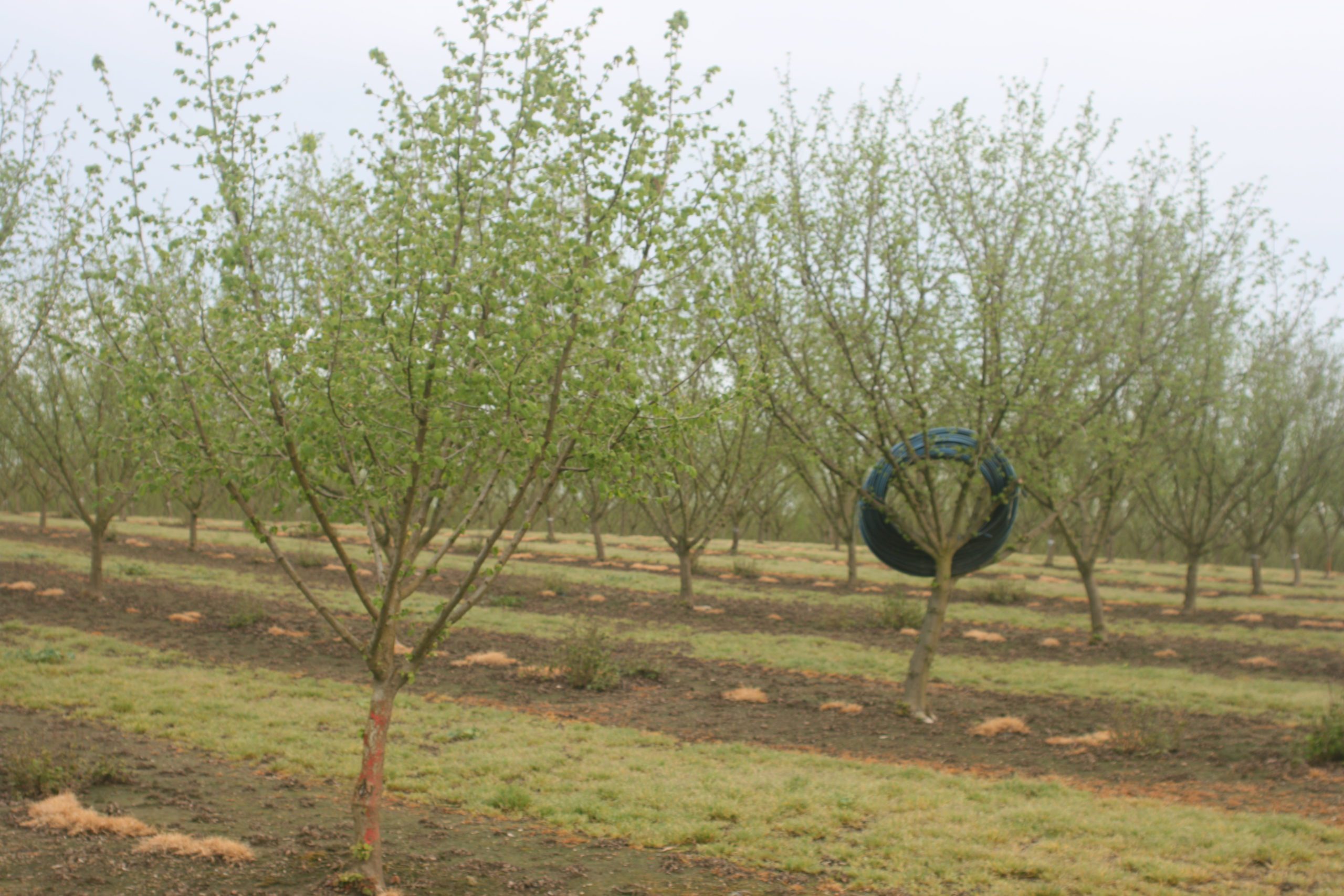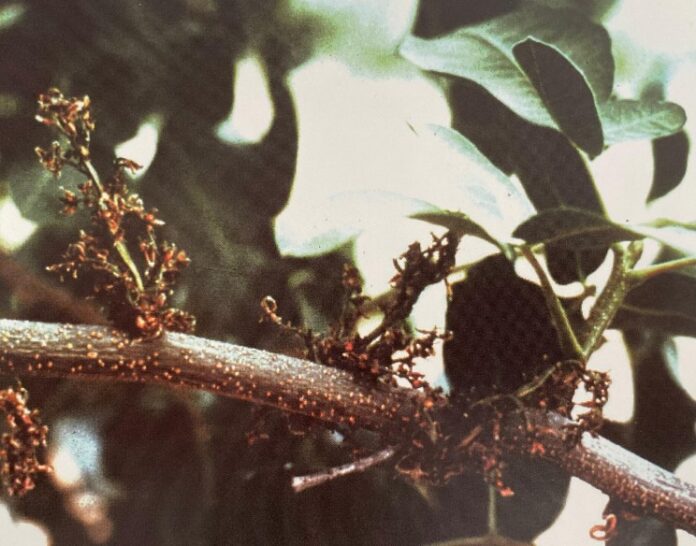
Zinc deficiency is a major concern in California pistachio production, being one of the most limiting factors in the southern San Joaquin Valley and other areas depending on soil characteristics. For example, soils with an alkaline pH, elevated levels of phosphorus, salinity and organic matter can reduce the availability of Zn for pistachio trees. Due to their low cation exchange capacity, sandy soils also may not provide adequate amounts of Zn. Zinc is essential for cell elongation and growth, pollen development, flower bud differentiation and fruit set. Zinc is very immobile within the tree, and as a result, symptoms are often found in young tissue. Reduced yields are the primary symptom of Zn deficiency.
Zinc Deficiency Symptoms in Pistachio
Zinc deficiency symptoms appear early in the season, with a delay in the opening of vegetative and flower buds that can take up to a month. Symptoms often resemble cold injury. The terminal leaves are small and chlorotic, and severe deficiency causes dieback of young terminal shoots and extremely short internodes that result in a rosetting effect. Other symptoms include poor fruit set and small, reddish, excessive blank nuts. Optimal Zn leaf tissue concentration ranges from 10 to 15 ppm, while the critical level is 7 ppm.
Zinc in the Soil
Plant uptake of Zn is reduced in soils with pH values of 7 and greater. High pH values are often found in calcareous soil in pistachio orchards in California. Application of fertilizers that can acidify the soil may reduce soil pH and increase the availability of Zn. Among these fertilizers are ammonium sulfate, ammonium phosphate, urea and elemental sulfur. Low levels of organic matter and high levels of magnesium and phosphorus in the soil can also reduce Zn uptake. Because alkaline soils are more susceptible to Zn deficiency, fertigating with non-chelated Zn in those conditions is not very effective.
Zinc Foliar Sprays
One alternative to soil challenges is the application of foliar Zn. Foliar fertilization is a rapid and efficient way to improve crop nutrient status during periods of high nutrient demand in the phenology of a tree crop or when soil conditions during the growing season render soil nutrients and, hence, soil-applied fertilizers less available to the tree. Foliar fertilization provides the nutrients required for photosynthesis and other important metabolic functions to prevent restrictions in carbon fixation, metabolism and plant productivity. Even a transient or incipient deficiency needs to be corrected quickly. For example, in pistachio, foliar Zn sprays may restore normal leaf growth in new leaves but will not correct leaves that are showing deficiency symptoms. The longer the tree’s nutrient status remains at the low end or below the optimal range at key stages of tree phenology, the greater the negative effects on yield, fruit quality and next year’s bloom.
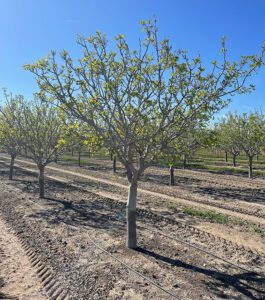
Foliar Sprays Postbloom
During periods of high nutrient demand or when soil conditions during the growing season reduce the availability of soil nutrients, one alternative is the application of foliar Zn. Foliar fertilization is a rapid and efficient way to improve crop nutrient status. The best time for foliar application of Zn is postbloom, at 50% leaf expansion, in late April and early May. During that time, leaves have a cuticle thin enough for nutrient uptake and sufficient surface area that the amount of nutrient taken up is large enough to enhance tree performance. Fall applications (late October or early November) just before leaf drop have not been proven to improve the nutrient status of trees.
Foliar sprays postbloom with Zn sulfate 36% (2 lbs/acre) are recommended. It is also suggested to adjust the solution with citric acid to pH 4.5 to improve nutrient solubility and absorption. Since Zn is highly immobile in pistachio trees, it is important to note in-season sprays correct deficiency on new growth, not old.
It is always recommended to check for Zn symptoms in spring. However, the onset of Zn deficiency will occur during mid to late season. Therefore, it is extremely important to do annual soil and leaf samplings to get an accurate picture of the Zn needs and uptake in the orchard.
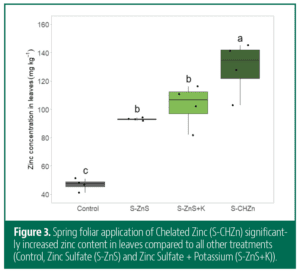
Research Update on Zinc Foliar Sprays
Actual rates of Zn applications can be very high, especially in pistachio orchards where recommendations of 40 lbs Zn sulfate per acre have been published. Despite being considerably less expensive and most cost-effective, application of Zn sulfate is extremely inefficient, and most of the Zn is simply wasted. In addition, the amount of foliar-applied Zn absorbed and translocated by the leaves of pistachio ranges significantly. The reason for this significant variability and the approaches required to optimize foliar Zn applications are known to be associated with time of application but could also be associated with the nutrient source.
To date, research into the response of pistachio trees to fall and pre-bloom foliar-applied Zn has produced mixed results, and there is limited data for the new pistachio cultivars such as ‘Golden Hills.’ Current research funded by the California Pistachio Research Board aims to test the capacity of different foliar fertilization strategies to successfully supply Zn nutrition at phenological stages of high nutrient demand/absorption to obtain a positive effect on fruit set and floral bud retention. One goal is to disseminate a cost-benefit analysis to growers for different Zn products such as Zn sulfate and chelated Zn since production costs, especially fertilizers, have increased dramatically.
Year 1 results provided evidence that foliar application of chelated Zn significantly increased Zn content in leaves compared to all other treatments. Foliar application of Zn when leaves are 1/2 to 2/3 expanded resulted in sufficient Zn uptake to maintain significantly greater leaf Zn concentrations as late as August compared to control trees. Samples collected in fall are currently being processed for nutrient analysis. Another goal is to address the cumulative effect of different Zn sources on the retention of floral buds for next year’s crop (2025) and their impact on yield in Year 2 of the project. This information will be assessed by evaluating the impact of each treatment on bud break and flowering by monitoring the initiation, full bloom, yield and return bloom in the current season.
The goal is to continue increasing the understanding of foliar Zn nutrition effects on fruit set, yield, nut quality (increased nutrient concentration, percent split nuts, reduced percent aborted and blank nuts) and retention of floral buds for next year’s crop with properly timed foliar fertilization using more efficient nutrient sources. An increase in any one of these yield components would increase grower net profit.




